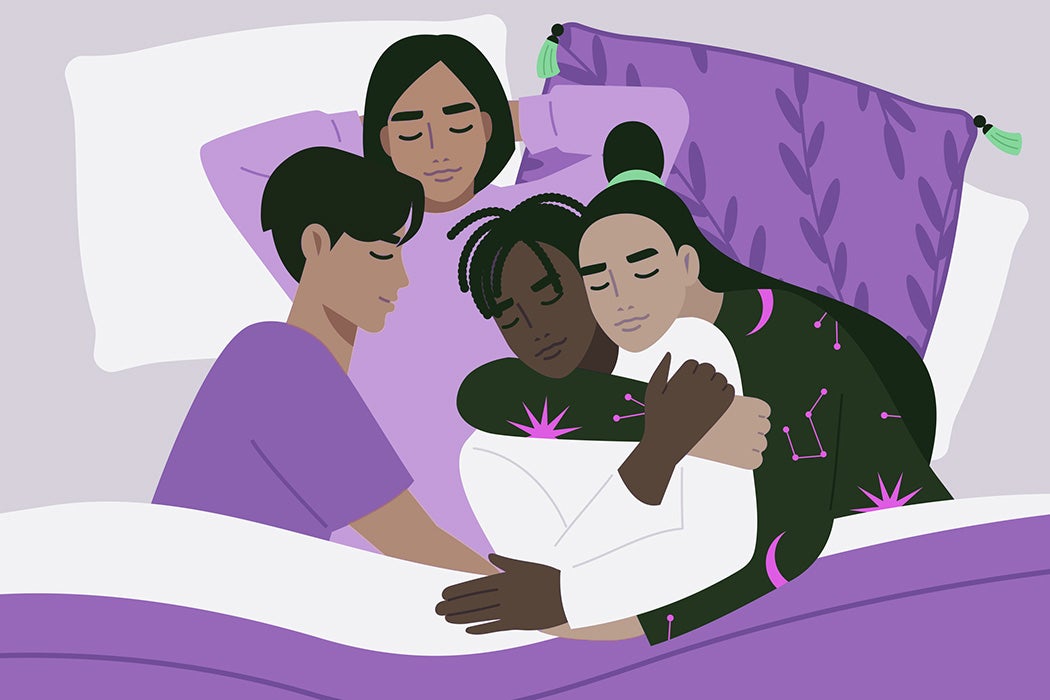A recent New York Times Magazine article presented Daniel Bergner’s interview of members of a twenty-person polycule, which is described as a network of polyamorous people involved in individual and group relationships. The interviewees hailed their open relationships as the reason for their happiness. Further, “situationships” with undefined relational boundaries, are becoming the most popular form of romantic relationships amongst a young demographic. Are these facts evidence of a world moving toward accepting consensually nonmonogamous (CNM) relationships?
There’s no doubt that conversations around gender and sexuality are freer than ever before, and people are becoming more open about their CNM relationships. However, inherent biases may still restrict the popularity of this new wave, both in practice and in academic research. These were the observations published in a 2017 paper by Terri D. Conley, Jes L. Matsick, Amy C. Moors, and Ali Ziegler in the journal Perspectives on Psychological Science.
The authors show that monogamy continues to be viewed as “the exemplary form of romantic partnership,” in turn informing much of the existing research surrounding relationships. This ensures that CNM relationships are not seen as being “functional (i.e., satisfying and of high quality).”
“The presumed superiority of monogamy may promote a bias in favor of monogamy vis-à-vis other types of relationships among laypeople,” they write. Consequently,
this bias may cause researchers to unfairly judge relationships that do not include a sexual exclusivity agreement. We propose that… examinations of the premise of monogamy may lead society to question presumptions about relationship structures and researchers to re-evaluate dyadic relationship dynamics that were founded on assumptions of monogamy.
To begin their assessment, the research team first defined CNM relationships as an arrangement between two or more partners where each one is allowed to engage in multiple romantic or sexual relationships at the same time. Of the many kinds of CNM relationships, the most prominent ones include swinging, which is primarily sexual and short-term in nature; polyamory, where people are romantically involved in more than one committed relationship; and open relationships, where each partner pursues their own sexual relationships outside of their primary partnership. For a general idea of the numbers involved, a 2016 study by Haupert, Gesselman, Moors, Fisher and Garcia is quoted to show that about 20 percent of single Americans have participated in a CNM relationship sometime during their lives.
The authors establish their point by looking at numerous studies in which participants were tasked with rating both monogamous and CNM relationships. Their findings show that
laypeople believe that monogamous relationships are considerably more trusting, committed, passionate, and more sexually satisfying but less likely to involve jealousy than other relational arrangements. […] The perception is not merely that CNM relationships are unusual or unfamiliar and hence confusing to the perceivers; they are perceived to be dysfunctional.
This means that the biased view toward those in CNM ones may also arise in the theoretical research surrounding relationships. There’s an underlying assumption that any sort of sexual or romantic entanglement outside of the primary relationship is akin to infidelity and the quality of the relationship is inferior.
To counter this belief, the authors conducted their own studies comparing people who were in monogamous and CNM relationships and arrived at this conclusion.
“Overall, the outcomes for monogamous and CNM participants generally were the same,” they write, “indicating no net benefit of one relationship style over another among people who, of course, self-selected into these relationships.” In the end, “it appears that many beliefs that the lay public hold about the quality of CNM relationships are unfounded. CNM relationships generally have equally positive relational outcomes as monogamous relationships…”
The implications of these findings are far-reaching. The authors believe that many unanswered questions may be explored by studying CNM relationships as healthy and positive alternatives to monogamy. However, changing a mindset, whether in regular parlance or with respect to academic research, is notoriously difficult.
Weekly Newsletter
As they explain, “We have found that even hypotheses suggesting that polyamorous or CNM relationships might have some advantages, in some circumstances, over monogamous relationships is often met with defensiveness above and beyond what we experience in publishing other research.”
The authors conclude that monogamy is seen as the golden standard by which healthy relationships are defined. However, this bias doesn’t allow for CNM relationships to be studied accurately. Hoping things will change, they argue that “[d]epartures from monogamy—specifically, CNM—present researchers with a unique opportunity to address a variety of theoretical questions of interest to psychologists and society in general.”







